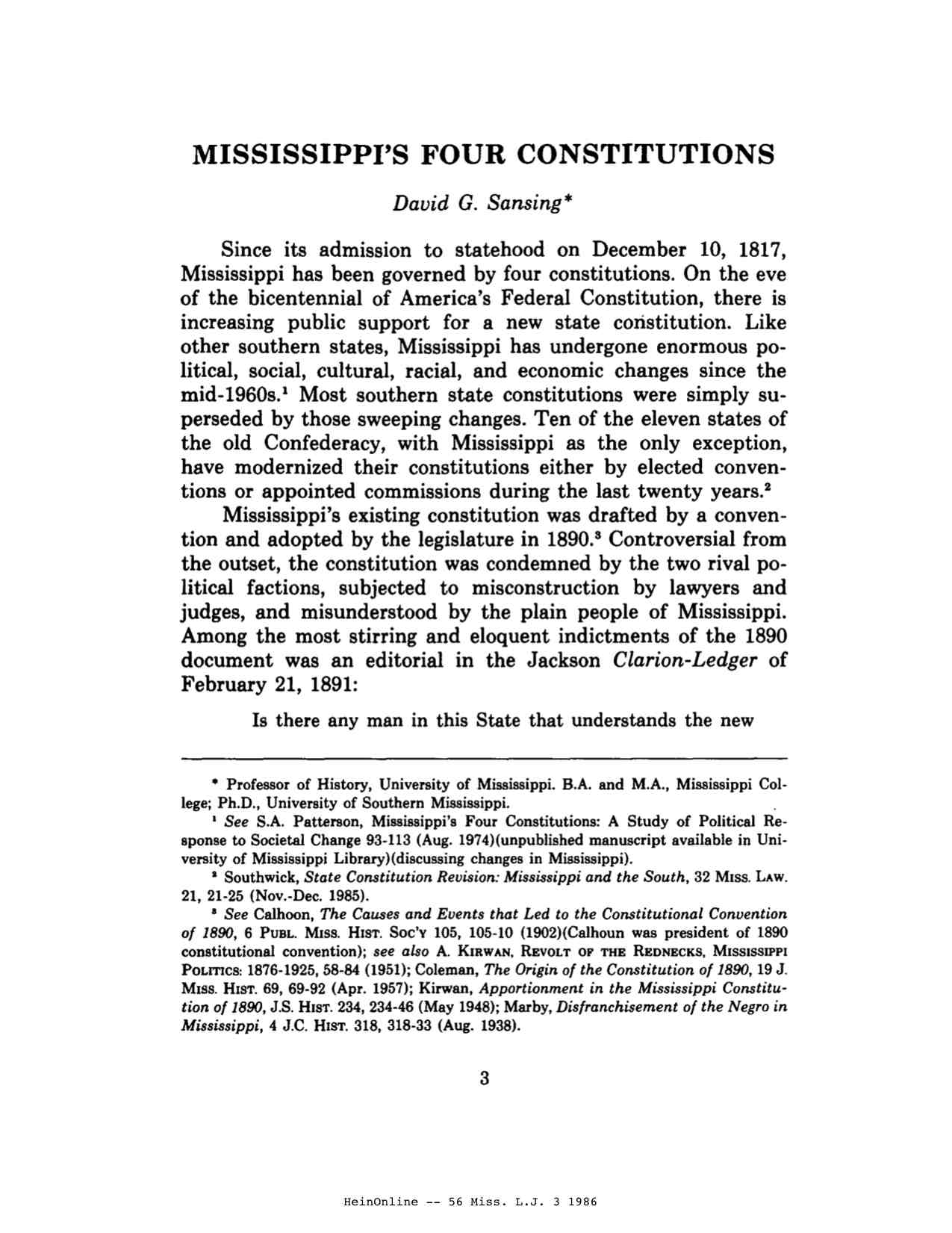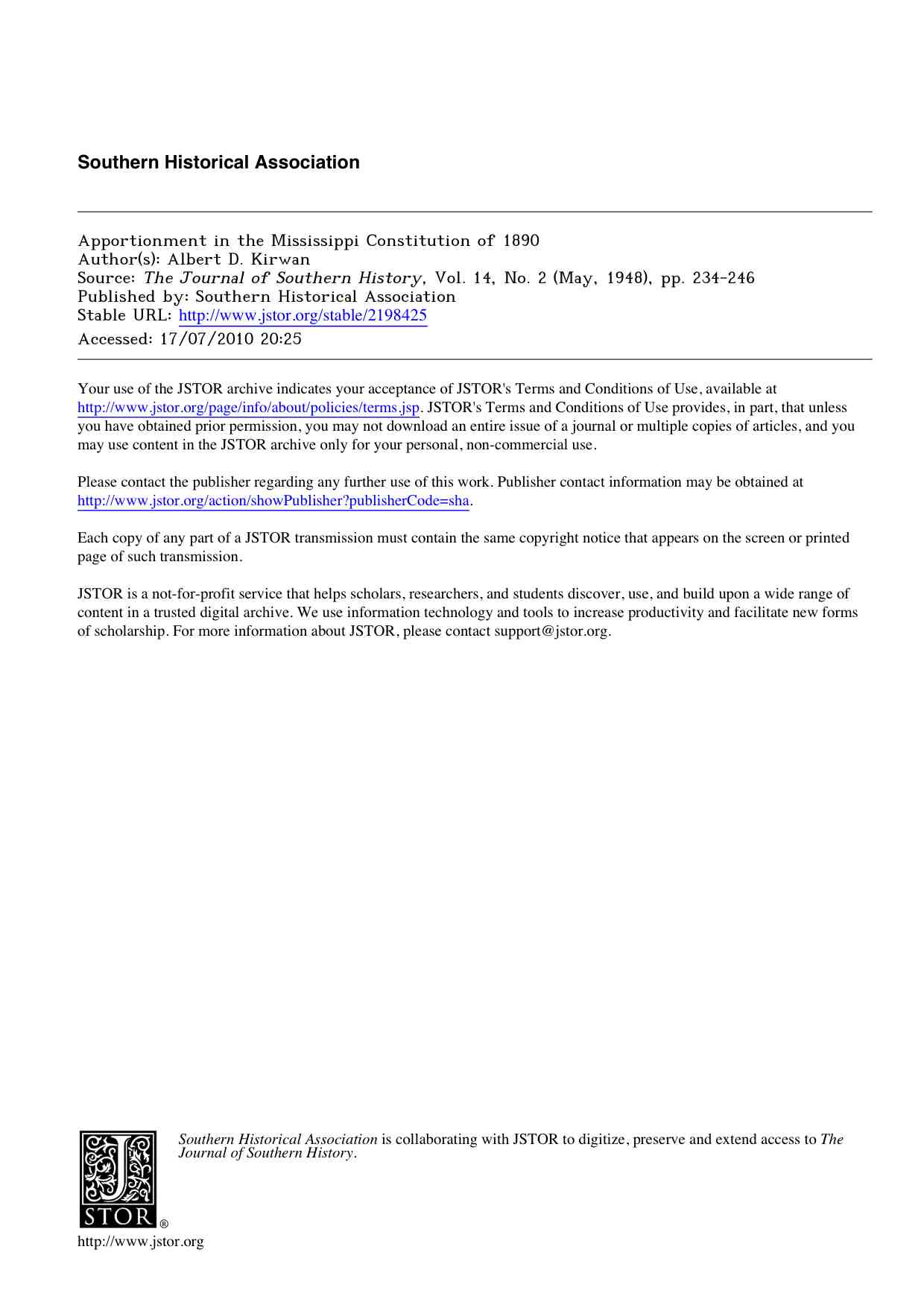- History of MS Congressional redistricting, 1860-1966, shows how “packing” and “cracking” were used to dilute black voting strength
- Sansing, David G., Mississippi’s Four Constitutions, 56 Miss.L.J.3 (1986)
- Kirwan, Albert D., Apportionment in the Mississippi Constitution of 1890, THe Journal of Southern History, Vol. 14, No. 2 (May, 1948), pp. 234-246
Historical Analysis Documents
 |
History of MS Congressional redistricting, 1860-1966, shows how “packing” and “cracking” were used to dilute black voting strength These 8 congressional redistricting maps, with data and explanation, created by Dr. Brian Lipsett, Movementech, Inc., with assistance from Southern Echo, comprise a unique collection created from original materials. The maps show how redistricting strategies altered the shape of congressional districts to maintain control by the plantation owners and to minimize black voting strength in Mississippi. These maps also provide a rich history of the shifts in demographics within the state, and in the evolution of how African Americans were characterized and defined by the Census Bureau from prior to the Civil War until the passage of the Voting Rights Act in 1965. |
 |
Sansing, David G., Mississippi’s buy cheap tramadol Four Constitutions, 56 Miss.L.J.3 (1986) This historical analysis by University of Mississippi Professer David Sansing tracks the evolution of the four constitutions that the State of Mississippi has used to frame its political structure. The article seeks to reveal the political, economic and cultural biases that underlay the development of each constitution. Published in 1986, the author, based on the political atmosphere at the time, predicted that Mississippi would have a new 5th Constitution by 1997. It didn’t happen. |
 |
Kirwan, Albert D., Apportionment in the Mississippi Constitution of 1890, The Journal of Southern History, Vol. 14, No. 2 (May, 1948), pp. 234-246 This analysis of the Mississippi Constitution of 1890 highlights how the apportionment of legislative districts was used to maintain the domination and control of state politics, and thereby state policies, and how, in particular, plantation owners systematically used the majority disenfranchised black population to inflate the size of the plantation area districts in order to reduce the political power of other parts of the state. |

